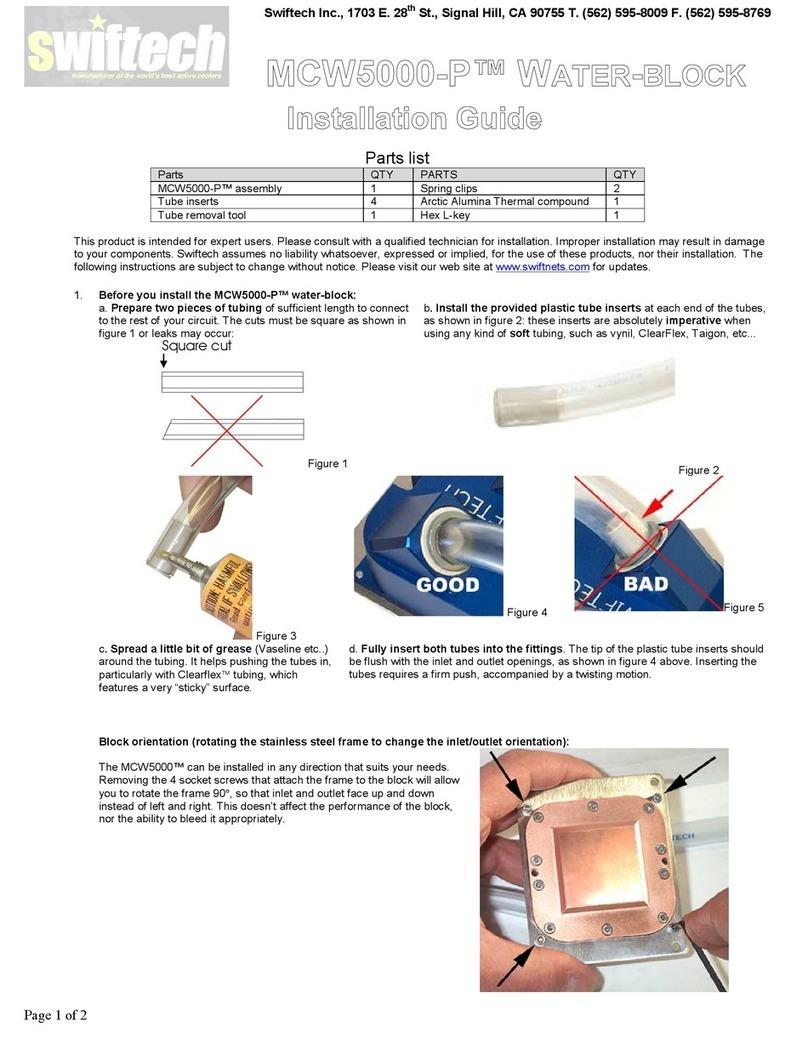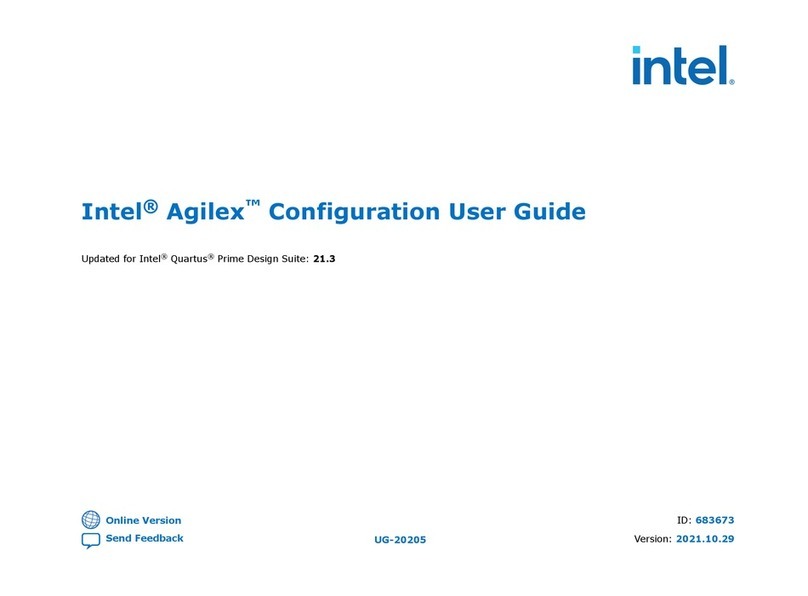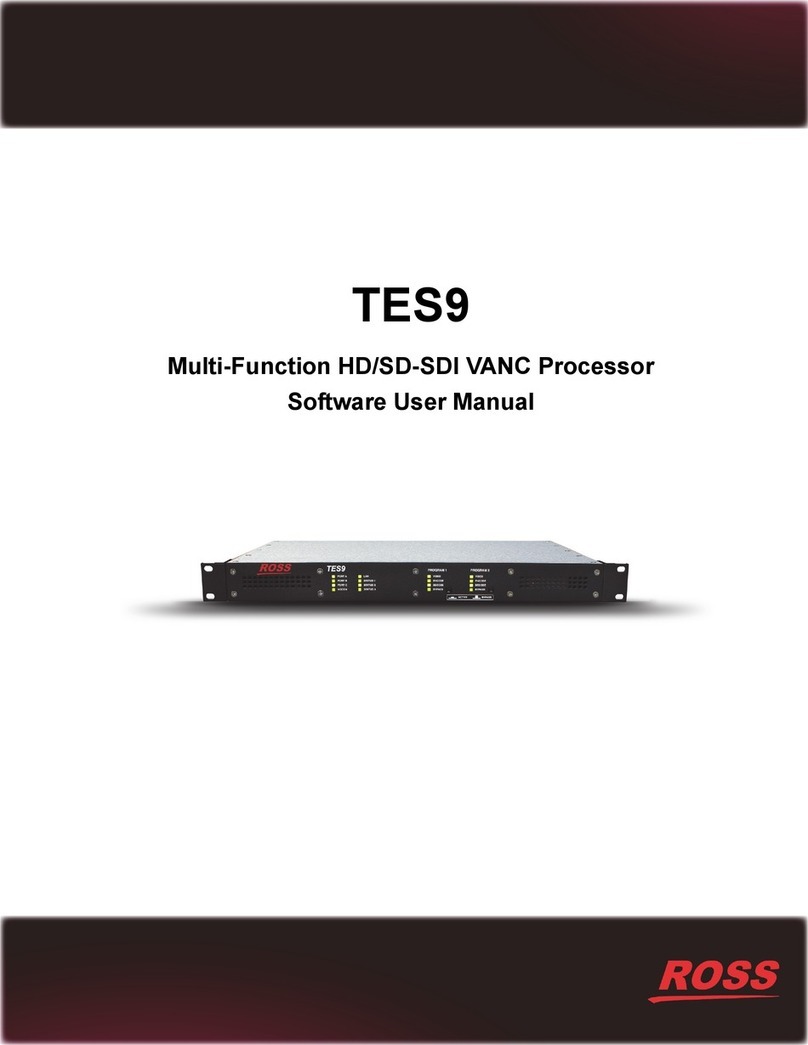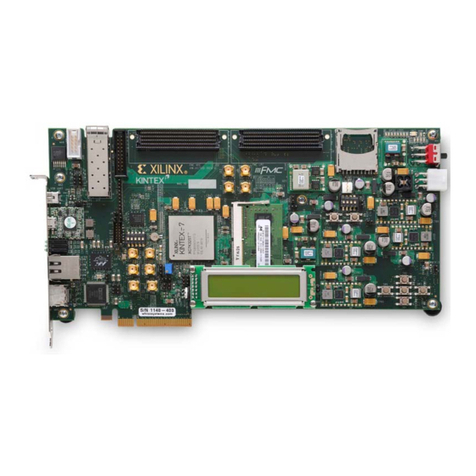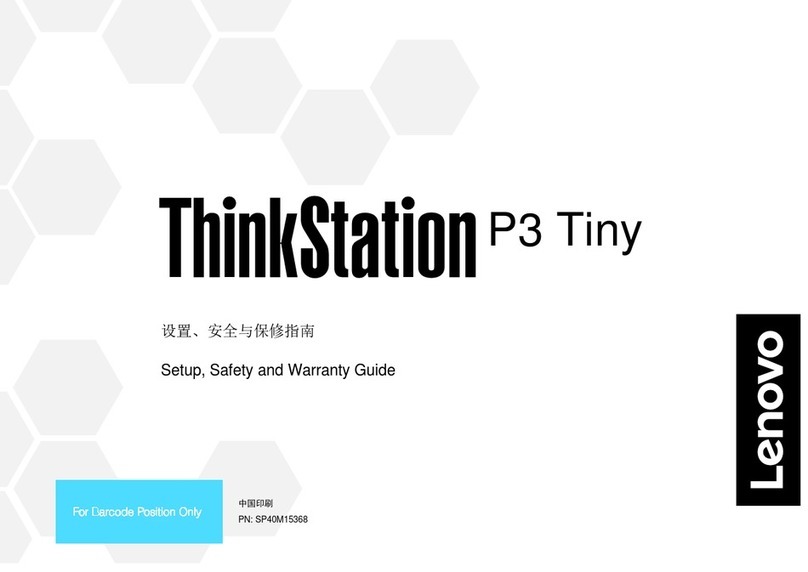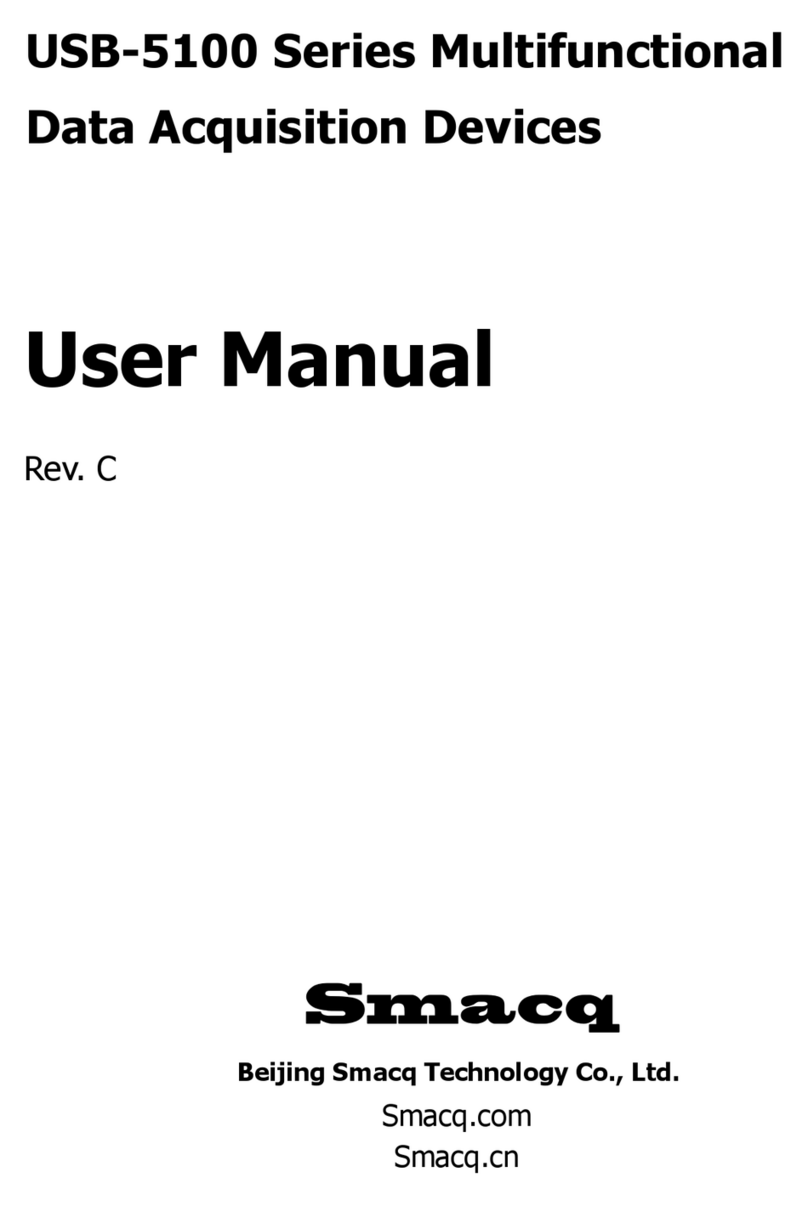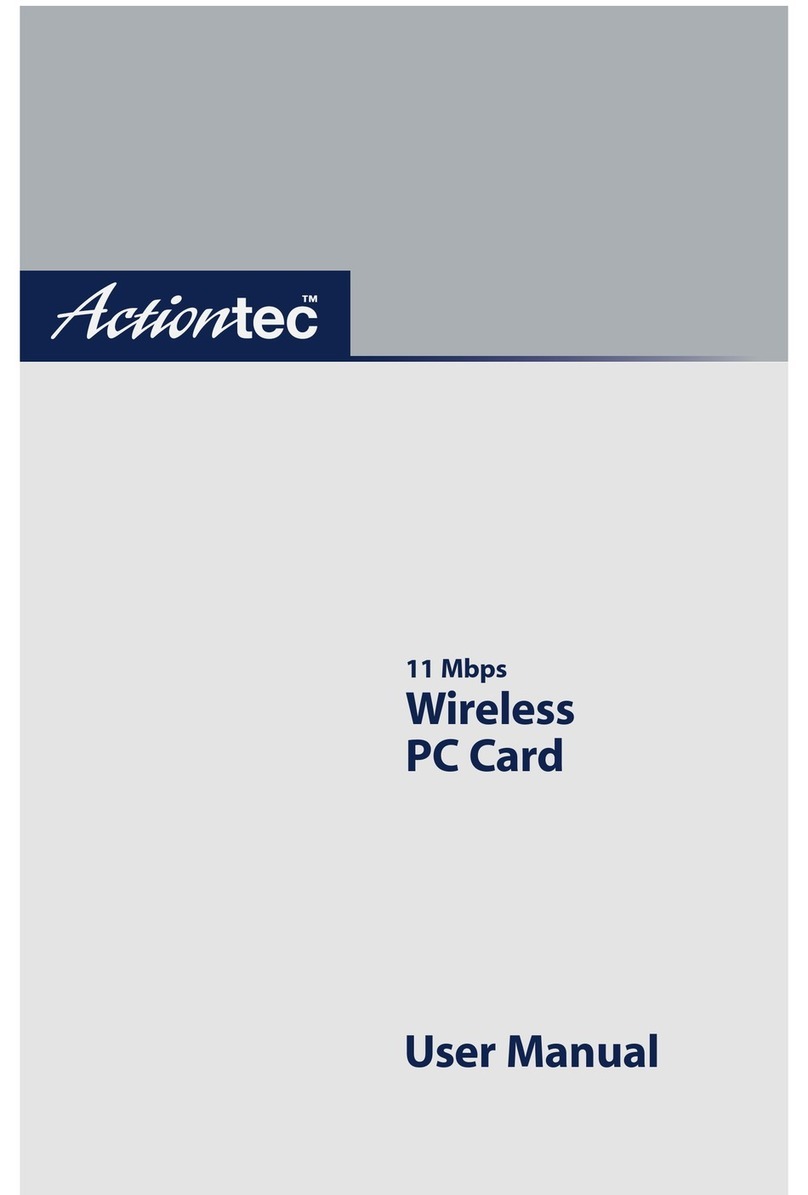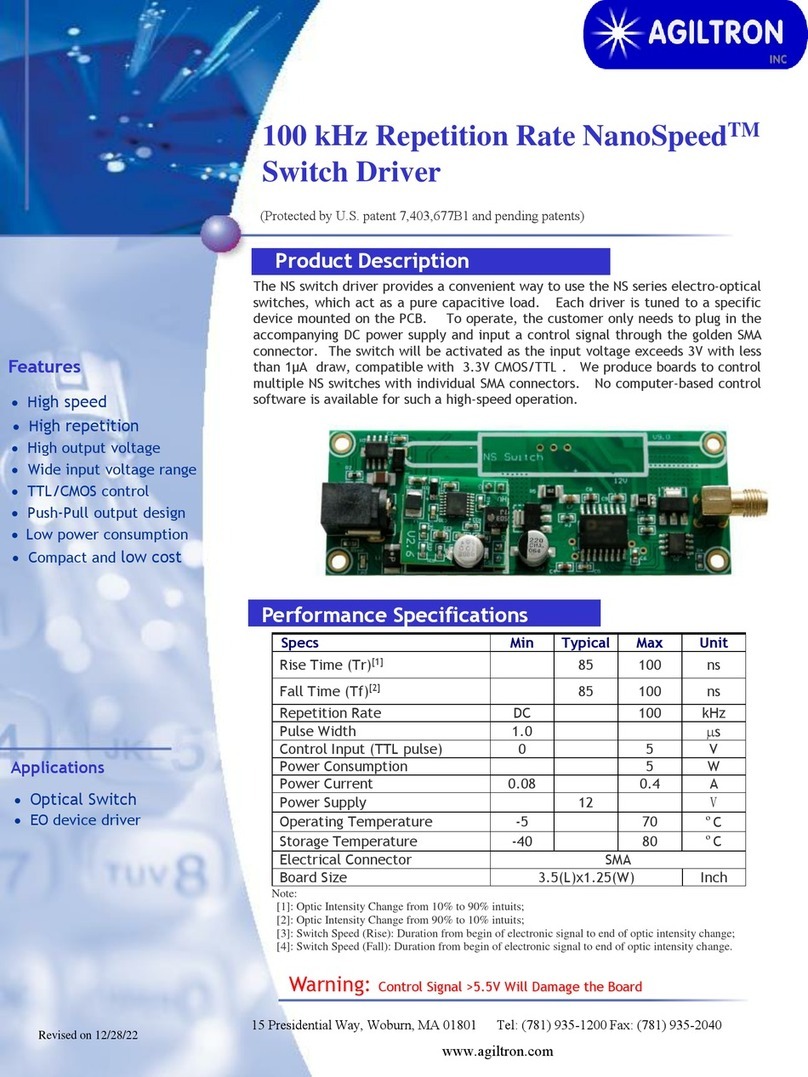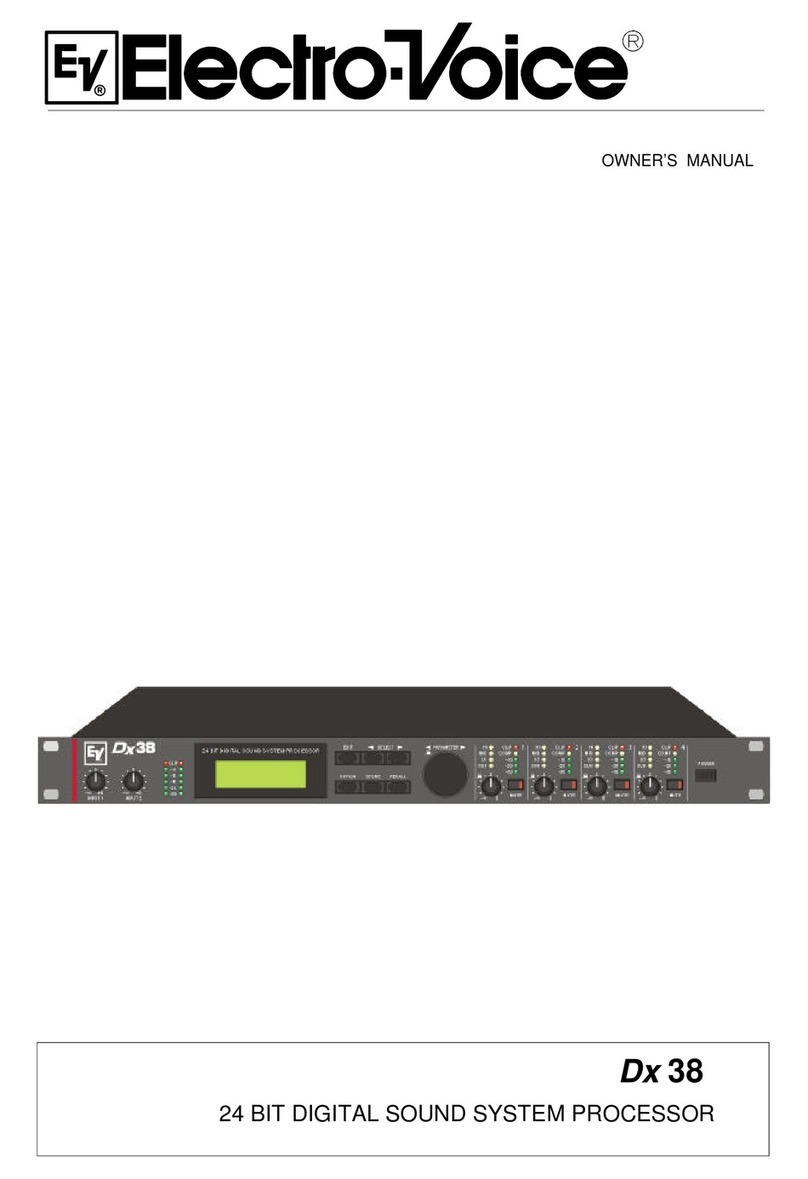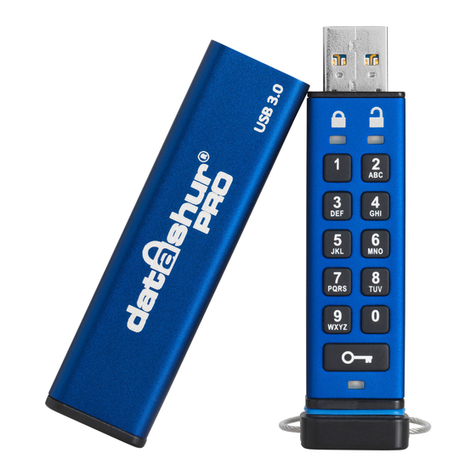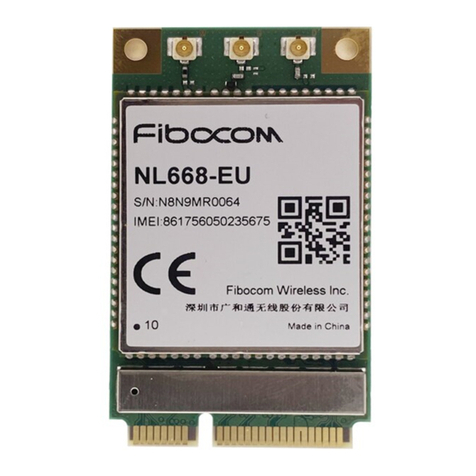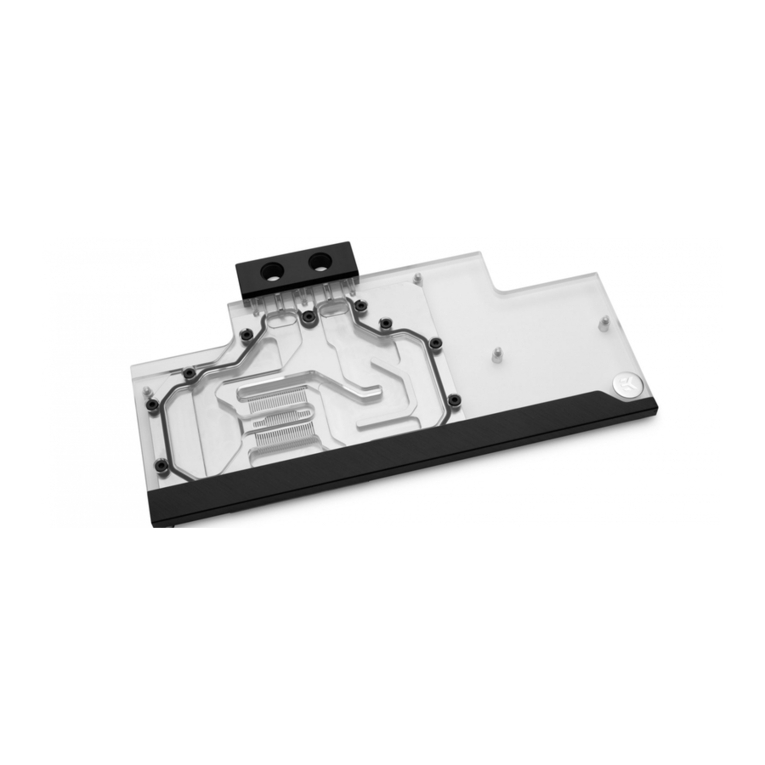Actel IGLOO PLUS Starter Kit User manual

Actel Corporation, Mountain View, CA 94043
© 2009 Actel Corporation. All rights reserved.
Printed in the United States of America
Part Number: 50200152-0
Release: March 2009
No part of this document may be copied or reproduced in any form or by any means without prior written
consent of Actel.
Actel makes no warranties with respect to this documentation and disclaims any implied warranties of
merchantability or fitness for a particular purpose. Information in this document is subject to change
without notice. Actel assumes no responsibility for any errors that may appear in this document.
This document contains confidential proprietary information that is not to be disclosed to any
unauthorized person without prior written consent of Actel Corporation.
Trademarks
Actel and the Actel logo are registered trademarks of Actel Corporation.
Adobe and Acrobat Reader are registered trademarks of Adobe Systems, Inc.
All other products or brand names mentioned are trademarks or registered trademarks of their respective
holders.

IGLOO PLUS Starter Kit User’s Guide 3
Table of Contents
Introduction . . . . . . . . . . . . . . . . . . . . . . . . . . . . . . . . . . . . 5
IGLOO PLUS Starter Kit Contents . . . . . . . . . . . . . . . . . . . . . . . . . . . . . . . . .5
1 Board Components and Settings . . . . . . . . . . . . . . . . . . . . . . . . . 7
Board Description . . . . . . . . . . . . . . . . . . . . . . . . . . . . . . . . . . . . . . . . . . 7
IGLOO PLUS Board Stackup . . . . . . . . . . . . . . . . . . . . . . . . . . . . . . . . . . . . 8
Connectors, Jumpers, and Switch Settings . . . . . . . . . . . . . . . . . . . . . . . . . . . . . 11
2 FPGA Description . . . . . . . . . . . . . . . . . . . . . . . . . . . . . . . . 15
Key Features of AGLP125-CSG289 . . . . . . . . . . . . . . . . . . . . . . . . . . . . . . . . 15
Power and Ground Pins . . . . . . . . . . . . . . . . . . . . . . . . . . . . . . . . . . . . . . 16
Bank I/O Signals . . . . . . . . . . . . . . . . . . . . . . . . . . . . . . . . . . . . . . . . . . 17
JTAG Pins . . . . . . . . . . . . . . . . . . . . . . . . . . . . . . . . . . 21
Decaps and Ground Post Schematics. . . . . . . . . . . . . . . . . . . . . . . . 22
3 Power . . . . . . . . . . . . . . . . . . . . . . . . . . . . . . . . . . . . . . . 23
Power Modes . . . . . . . . . . . . . . . . . . . . . . . . . . . . . . . . . . . . . . . . . . . . 24
Battery . . . . . . . . . . . . . . . . . . . . . . . . . . . . . . . . . . . . . . . . . . . . . . . 25
Potentiometer and Voltage-Sweep . . . . . . . . . . . . . . . . . . . . . . . . . . . . . . . . . 25
Current Measurement . . . . . . . . . . . . . . . . . . . . . . . . . . . . . . . . . . . . . . . 26
4 Operation of Board Components . . . . . . . . . . . . . . . . . . . . . . . . . 29
Clock Oscillator . . . . . . . . . . . . . . . . . . . . . . . . . . . . . . . . . . . . . . . . . . . 29
Reset . . . . . . . . . . . . . . . . . . . . . . . . . . . . . . . . . . . . . . . . . . . . . . . . 29
Flash*Freeze Mode . . . . . . . . . . . . . . . . . . . . . . . . . . . . . . . . . . . . . . . . . 30
Push-Button Switches . . . . . . . . . . . . . . . . . . . . . . . . . . . . . . . . . . . . . . . 37
DIP Switches . . . . . . . . . . . . . . . . . . . . . . . . . . . . . . . . . . . . . . . . . . . . 38
User LEDs . . . . . . . . . . . . . . . . . . . . . . . . . . . . . . . . . . . . . . . . . . . . . 39
I/O Test Pins . . . . . . . . . . . . . . . . . . . . . . . . . . . . . . . . . . . . . . . . . . . . 40
OLED . . . . . . . . . . . . . . . . . . . . . . . . . . . . . . . . . . . . . . . . . . . . . . . 41
Interface Connector . . . . . . . . . . . . . . . . . . . . . . . . . . . . . . . . . . . . . . . . . 42
USB-to-UART Interface . . . . . . . . . . . . . . . . . . . . . . . . . . . . . . . . . . . . . . 43
SPI Flash . . . . . . . . . . . . . . . . . . . . . . . . . . . . . . . . . . . . . . . . . . . . . . 44
Low-Cost Programming Stick (LCPS) . . . . . . . . . . . . . . . . . . . . . . . . . . . . . . . 45
5 Programming . . . . . . . . . . . . . . . . . . . . . . . . . . . . . . . . . . . 49
6 IGLOO PLUS Board Demo . . . . . . . . . . . . . . . . . . . . . . . . . . . 51
Demos Included in the Starter Kit . . . . . . . . . . . . . . . . . . . . . . . . . . . . . . . . . 51
Powering Up the Board . . . . . . . . . . . . . . . . . . . . . . . . . . . . . . . . . . . . . . . 51
Getting Started with the IGLOO PLUS Starter Kit Demo Design . . . . . . . . . . . . . . . . 51
A Resources . . . . . . . . . . . . . . . . . . . . . . . . . . . . . . . . . . . . . 55

Table of Contents
4IGLOO PLUS Starter Kit User’s Guide
B Product Support . . . . . . . . . . . . . . . . . . . . . . . . . . . . . . . . . . 57
Customer Service . . . . . . . . . . . . . . . . . . . . . . . . . . . . . . . . . . . . . . . . . . 57
Actel Customer Technical Support Center . . . . . . . . . . . . . . . . . . . . . . . . . . . . . 57
Actel Technical Support . . . . . . . . . . . . . . . . . . . . . . . . . . . . . . . . . . . . . . 57
Website . . . . . . . . . . . . . . . . . . . . . . . . . . . . . . . . . . . . . . . . . . . . . . . 57
Contacting the Customer Technical Support Center . . . . . . . . . . . . . . . . . . . . . . . . 57
Index . . . . . . . . . . . . . . . . . . . . . . . . . . . . . . . . . . . . . . . 59

IGLOO PLUS Starter Kit User’s Guide 5
Introduction
IGLOO PLUS Starter Kit Contents
The RoHS-compliant, environmentally friendly IGLOO® PLUS Starter Kit is packaged in a recyclable cardboard box
made from recycled materials. This development kit includes an on-board programmer and demonstrates the ultra-low
power of Actel IGLOO PLUS devices. Table 1 lists the contents of the box.
Figure 1 · IGLOO PLUS Starter Kit Board
Table 1 · IGLOO PLUS Starter Kit Contents
Quantity Contents
1 IGLOO PLUS board with AGLP125 IGLOO PLUS FPGA
1 Programmer for use with IGLOO PLUS board
1 5 V power supply
2 USB 2.0 high-speed cables
1 Packet of jumpers
1 Actel Libero® Integrated Design Environment (IDE) DVD
1 Quick Start Guide


IGLOO PLUS Starter Kit User’s Guide 7
1
Board Components and Settings
This chapter describes the components and settings for the IGLOO PLUS Starter Kit Board.
Board Description
The IGLOO PLUS Starter Kit board is intended to provide a low-cost system platform for evaluating IGLOO PLUS
(AGLP) technology, such as low power, I/O state preservation during Flash*Freeze mode, and Schmitt Triggered I/Os.
Other advanced features include the ability to use the FPGA I/Os of the Expansion Header as hot-swappable and the
Schmitt Triggered FPGA inputs for improved noise immunity.
This evaluation board enables you to measure power consumption (dynamic, static, and Flash*Freeze modes) with the
core operating between 1.2 V and 1.5 V. When using the board in conjunction with Actel’s power analysis tools, you will
have a clear picture of application power consumption at each stage in your design. In addition, the Libero® Integrated
Design Environment (IDE) tool suite now includes power-driven layout (PDL), which can reduce the power
consumption of designs up to 30 percent.
The evaluation board has a small form factor, measuring 3.7 inches by 4 inches, and supports an AGLP125 IGLOO
PLUS device in the 14 mm × 14 mm CSG289 package. All components used on the board, such as LEDs, reset (μA
range), and oscillator, are low-power components. Also included on the evaluation board is a USB-to-UART interface
to allow HyperTerminal on a PC to communicate with the IGLOO PLUS device on the board.
The top of the board has a programming stick header which allows the low-cost programming stick (LCPS) to be
attached to the board for programming the IGLOO PLUS AGLP125-CSG289 device (Figure 1-1 on page 7). FPGA
I/Os have been wired to test pin pads on the board for debug and expandability.
Note: The clock oscillator for the IGLOO PLUS Starter Kit Board is behind the board.
Figure 1-1 · IGLOO PLUS Starter Kit Board

Board Components and Settings
8IGLOO PLUS Starter Kit User’s Guide
IGLOO PLUS Board Stackup
The IGLOO PLUS board is built on a 10-layer PCB. Figure 1-2 and Figure 1-3 on page 10 show the top (L1) and
bottom (L10) silkscreens. The full PCB design layout is provided on the Actel website, on the IGLOO PLUS Starter
Kit page: http://www.actel.com/products/hardware/devkits_boards/iglooplus_starter.aspx. To view the PCB design
layout files, you can use the Allegro Free Physical Viewer, which can be downloaded from the Cadence Allegro
Downloads page.
1. Top Signal (Figure 1-2 on page 9)
2. GND 1
3. Signal
4. GND 2
5. PWR 1
6. PWR 2
7. GND 3
8. Signal
9. GND 4
10. Bottom Signal (Figure 1-3 on page 10)

IGLOO PLUS Board Stackup
IGLOO PLUS Starter Kit User’s Guide 9
Figure 1-2 · IGLOO PLUS Top Silkscreen (L1)

Board Components and Settings
10 IGLOO PLUS Starter Kit User’s Guide
Figure 1-3 · IGLOO PLUS Bottom Silkscreen (L10)

Connectors, Jumpers, and Switch Settings
IGLOO PLUS Starter Kit User’s Guide 11
Connectors, Jumpers, and Switch Settings
Recommended default jumper settings are defined in Table 1-1. The voltage selection jumpers are highlighted in grey.
Connect jumpers in the default settings described in Table 1-1 to enable the pre-programmed demo design to function
correctly.
Table 1-1 · Jumper and Connector Settings
Jumper Default Setting Comment
J1 Ground post header
J2 Ground post header
J3 LC JTAG header for programmer
J4 JTAG header
J5 USB mini receptacle
J6 Pin 2-3 Remove jumper to disconnect VCCI_0 power
J7 Remove Remove jumper to disconnect external battery source
J8 Pin 2-3 Remove jumper to disconnect VCCI_1 power
J9 Pin 1-4
Select WALL, BAT, VUSB for 5V_SOURCE
Pin 1-4 = VUSB
Pin 2-4 = BAT
Pin 3-4 = WALL
J10 5 V Brick
J11 Pin 1-2
Select VCC or VCC_SWEEP for VCORE
Pin 1-2 = VCC
Pin 3-2 = VCC_SWEEP
J12 Pin 2-3 Current measurement header for VCORE
J13 Pin 2-3 Current measurement header for VCCI_3
J14 Pin 1-2
Select VCC or VCC_SWEEP for VCCI_1
Pin 1-2 = VCC
Pin 3-2 = VCC_SWEEP
J15 Pin 3-2
Select VJTAGENB or 3.3 V
Pin 3-2 = VJTAGENB
Pin 1-2 = 3.3 V
J16 Pin 2-4
Select 3.3 V, 1.5 / 1.2 V, or 2.5 V for VCCI_1
Pin 2-4 = 3.3 V
Pin 3-4 = 1.5 V or 1.2 V
Pin 1-4 = 2.5 V
J17 Pin 2-3 Current measurement header for VCCI_2
J18 Pin 1-2
Select VCC or VCC_SWEEP for VCCI_0
Pin 1-2 = VCC
Pin 3-2 = VCC_SWEEP

Board Components and Settings
12 IGLOO PLUS Starter Kit User’s Guide
J19 Pin 2-4
Select 3.3 V, 1.5 / 1.2 V, or 2.5 V for VCCI_0
Pin 2-4 = 3.3 V
Pin 3-4 = 1.5 V or 1.2 V
Pin 1-4 = 2.5 V
J20 Pin 2-3 Current measurement header for VJTAG
J21 Pin 1-2
Select 3.3 V or 1.5 / 1.2 V for VJTAG
Pin 1-2 = 3.3 V
Pin 2-3 = 1.5 V or 1.2 V
J22 Pin 2-3 Current measurement header for VPUMP
J23-J24 Pin 1-2
Remove each jumper to disconnect any of the 2 FET Switches[1:2] from FPGA.
J23 = 3V3_SWITCH1
J24 = 3V3_SWITCH2
J25-J27 Pin 1-2
Remove each jumper to disconnect any of the 3 FET LEDs from FPGA.
J25 = FET_P1
J26 = FET_N
J27 = FET_P2
J28-J35 Pin 1-2
Remove each jumper to disconnect any of the 8 user DIP switches[1:8] from
FPGA.
J28 = D_SWITCH1
J29 = D_SWITCH2
J30 = D_SWITCH3
J31 = D_SWITCH4
J32 = D_SWITCH5
J33 = D_SWITCH6
J34 = D_SWITCH7
J35 = D_SWITCH8
Table 1-1 · Jumper and Connector Settings (continued)
Jumper Default Setting Comment

Connectors, Jumpers, and Switch Settings
IGLOO PLUS Starter Kit User’s Guide 13
J36-J39 Pin 1-2
Remove each jumper to disconnect any of the 4 push-button switches[1:4] from
FPGA.
J36 = SWITCH1
J37 = SWITCH2
J38 = SWITCH3
J39 = SWITCH4
J40-J47 Pin 1-2
Remove each jumper to disconnect any of the 8 user LEDs[1:8] from FPGA.
J42 = LED1
J41 = LED2
J40 = LED3
J47 = LED4
J46 = LED5
J45 = LED6
J44 = LED7
J43 = LED8
Table 1-2 · Switch Settings
Switch Default Setting Comment
SW1–SW4 Push-button switches for SWITCH[1:4]
SW5 CLOSE Contains DIP switches for 3V3_SWITCH[1:2]
DSW5 CLOSE Contains DIP switches for D_SWITCH[1:8]
SW7 Push-button switch for system reset PBRESET_N
SW8 OFF Flash*Freeze: To enable Flash*Freeze mode, SW8 toward ON.
In Flash*Freeze mode, current consumption of FPGA goes below 50 μA.
Table 1-1 · Jumper and Connector Settings (continued)
Jumper Default Setting Comment


IGLOO PLUS Starter Kit User’s Guide 15
2
FPGA Description
The IGLOO PLUS board is populated with an IGLOO PLUS AGLP125-CSG289 FPGA.
Key Features of AGLP125-CSG289
• Low power
• 1.2 V to 1.5 V core voltage support for low power
• Supports single-voltage system operation
• 5 μW power consumption in Flash*Freeze mode
• Low-power active FPGA operation
• Flash*Freeze technology enables ultra-low power consumption while maintaining FPGA content
• Configurable hold previous state, tristate, HIGH, or LOW state per I/O in Flash*Freeze mode
• Easy entry to / exit from ultra-low-power Flash*Freeze mode
• Reprogrammable flash technology
• In-system programming (ISP) and security
• High-performance routing hierarchy
• Advanced I/O
• Selectable Schmitt trigger inputs
• Clock conditioning circuit (CCC) and PLL
• Embedded memory
Table 2-1 lists specifications for the AGLP125-CSG289 FPGA.
For further information, refer to the IGLOO PLUS datasheet:
http://www.actel.com/documents/IGLOOPLUS_DS.pdf
Table 2-1 · IGLOO PLUS AGLP125-CSG289 FPGA Features
Feature Specification
System Gates 125,000
Typical Equivalent Macrocells 1,024
VersaTiles (D-flip-flops) 3,120
Flash*Freeze Mode (Typical, μW) 16
RAM kbits (1,024 bits) 36
4,608-Bit Blocks 8
FlashROM (bits) 1 K
Secure (AES) ISP Yes
Integrated PLLs in CCCs 1
VersaNet Globals 18
I/O Banks 4
Maximum User I/Os 212

FPGA Description
16 IGLOO PLUS Starter Kit User’s Guide
Power and Ground Pins
Figure 2-1 shows the power and ground pins for AGLP125-CSG289.
Figure 2-1 · Power and Ground Pins for AGLP125-CSG289
VCCPLF
VCCIB0_1
B7
VCCIB0_2
B12
VCCIB0_3
C5
VCCIB0_4
E11
VCCIB1_1
E16
VCCIB1_2
H15
VCCIB1_3
L14
VCCIB1_4
M17
VCCIB2_1
N10
VCCIB2_2
P13
VCCIB2_3
R6
VCCIB2_4
T9
VCCIB3_1
E1
VCCIB3_2
F4
VCCIB3_3
J3
VCCIB3_4
M2
VCC1
L9
VCC2
G9
VCC3
J7
VCC4
J11
VCOMPLF
H1
VCCPLF
J1
GND1 A4
GND2 A9
GND3 A14
GND4 B2
GND5 B17
GND6 C10
GND7 C15
GND8 D3
GND9 D8
GND10 D13
GND11 F14
GND12 G2
GND13 G7
GND14 G8
GND15 G10
GND16 G11
GND17 G17
GND18 H7
GND19 H8
GND20 H9
GND21 H10
GND22 H11
GND23 J8
GND24 J9
GND25 J10
GND26 K1
GND27 K7
GND28 K8
GND29 K9
GND30 K10
GND31 K11
GND32 K16
GND33 L4
GND34 L7
GND35 L8
GND36 L10
GND37 L11
GND38 N5
GND39 N15
GND40 P3
GND41 P8
GND42 R1
GND43 R11
GND44 T4
GND45 T14
GND46 U2
GND47 U7
GND48 U12
SEC 5/6
AGLP125 CSG289
POWER
GND
U5E
AGLP125-CSG289
SEC 5/6
POWER
GND
U5E

Bank I/O Signals
IGLOO PLUS Starter Kit User’s Guide 17
Bank I/O Signals
Figure 2-2 through Figure 2-5 on page 20 show schematics for the bank I/O signals.
Figure 2-2 · Bank 0 I/O Signals for AGLP125-CSG289
AGL_B0_PIN_D5
AGL_B0_PIN_A3
AGL_B0_PIN_A2
AGL_B0_PIN_D6
AGL_B0_PIN_F7
AGL_B0_PIN_B4
AGL_B0_PIN_C6
AGL_B0_PIN_E7
AGL_B0_PIN_F8
AGL_B0_PIN_A5
AGL_B0_PIN_C7
AGL_B0_PIN_E8
AGL_B0_PIN_A7
AGL_B0_PIN_F9
AGL_B0_PIN_A8
AGL_B0_PIN_E9
AGL_B0_PIN_D9
AGL_B0_PIN_E10
AGL_B0_PIN_D12
AGL_B0_PIN_E12
AGL_B0_PIN_E5
AGL_B0_PIN_C16
AGL_B0_PIN_A1
AGL_B0_PIN_E13
AGL_B0_PIN_B16
AGL_B0_PIN_D14
AGL_B0_PIN_B3
AGL_B0_PIN_C4
AGL_B0_PIN_E6
AGL_B0_PIN_B5
AGL_B0_PIN_D7
AGL_B0_PIN_B6
AGL_B0_PIN_A6
AGL_B0_PIN_C8
AGL_B0_PIN_C2
AGL_B0_PIN_C3
AGL_B0_PIN_D15
AGL_B0_PIN_A17
AGL_B0_PIN_D4
AGL_B0_PIN_B1
AGL_B0_PIN_F10
AGL_B0_PIN_B9
AGL_B0_PIN_B8
AGL_B0_PIN_C9
AGL_B0_PIN_A10
AGL_B0_PIN_B10
GPIOA
GPIOA
GPIOA
GPIOA
GPIO
GPIOA
GPIOA
GPIOA
GPIOA
GPIOA
GPIOA
GPIO
GPIO
GPIO
GPIO
GPIOA
GPIOA
IO06RSB0
B3
IO07RSB0
D5
IO08RSB0
A3
IO09RSB0
C4
IO10RSB0
D6
IO11RSB0
A2
IO12RSB0
E6
IO13RSB0
B4
IO14RSB0
F7
IO15RSB0
B5
IO16RSB0
E7
IO17RSB0
C6
IO18RSB0
D7
IO19RSB0
A5
IO20RSB0
F8
IO21RSB0
B6
IO22RSB0
E8
IO23RSB0
C7
IO24RSB0
A6
IO25RSB0
F9
IO26RSB0
A7
IO27RSB0
C8
IO28RSB0
B8
IO29RSB0
F10
IO30RSB0
A8
IO31RSB0
B9
IO32RSB0
E9
IO33RSB0
C9
IO34RSB0
D9
IO35RSB0
A10
IO36RSB0
E10
IO37RSB0
B10
IO56RSB0 E12
IO55RSB0 D12
IO54RSB0 A16
IO53RSB0 F12
IO52RSB0 C14
IO51RSB0 F11
IO50RSB0 C13
IO49RSB0 B15
IO48RSB0 A15
IO47RSB0 D11
IO46RSB0 B14
IO45RSB0 C12
IO44RSB0 B13
IO43RSB0 C11
IO42RSB0 A13
IO41RSB0 D10
IO40RSB0 A12
IO39RSB0 B11
IO38RSB0 A11
GAA0/IO00RSB0 C2
GAA1/IO01RSB0 B1
GAB0/IO02RSB0 D4
GAB1/IO03RSB0 A1
GAC0/IO04RSB0 C3
GAC1/IO05RSB0 E5
GBA0/IO61RSB0 C16
GBA1/IO62RSB0 D15
GBB0/IO59RSB0 D14
GBB1/IO60RSB0 E13
GBC0/IO57RSB0 A17
GBC1/IO58RSB0 B16
BANK0
AGLP125 CSG289
SEC 1/6
U5A
AGLP125-CSG289
BANK0
SEC 1/6
U5A
TP86TP86
TP69TP69
TP99 TP
TP99 TP
TP71TP71
TP106TP106
P239P239
TP102 TP
TP102 TP
TP83 TP
TP83 TP
TP80 TP
TP80 TP
TP92 TP
TP92 TP
TP123TP123
TP75TP75
TP95TP95
P207P207
TP109 TP
TP109 TP
TP76 TP
TP76 TP
TP124 TP
TP124 TP
TP120TP120
TP100 TP
TP100 TP
TP103 TP
TP103 TP
TP111 TP
TP111 TP
TP101TP101
TP94TP94
TP97 TP
TP97 TP
TP105TP105
P240P240
TP119 TP
TP119 TP
TP22 TP
TP22 TP
TP98 TP
TP98 TP
TP91 TP
TP91 TP
TP74TP74
TP82 TP
TP82 TP
TP88 TP
TP88 TP
TP96 TP
TP96 TP
P247P247
TP117 TP
TP117 TP
TP112TP112
TP77 TP
TP77 TP
TP81 TP
TP81 TP
TP68 TP
TP68 TP
TP89 TP
TP89 TP
TP121TP121
236236
TP118 TP
TP118 TP
TP114TP114
TP90 TP
TP90 TP
TP122TP122
TP93 TP
TP93 TP
TP115TP115
TP87TP87
TP85TP85
TP72TP72
TP73TP73
TP116 TP
TP116 TP
TP78 TP
TP78 TP
TP113TP113
TP107TP107
TP110TP110
TP84 TP
TP84 TP
P222P222
TP70TP70
TP108TP108
TP79 TP
TP79 TP

FPGA Description
18 IGLOO PLUS Starter Kit User’s Guide
Figure 2-3 · Bank 1 I/O Signals for AGLP125-CSG289
AGL_B1_PIN_L16
AGL_B1_PIN_K15
AGL_B1_PIN_K14
AGL_B1_PIN_M16
AGL_B1_PIN_L15
AGL_B1_PIN_L13
AGL_B1_PIN_N17
AGL_B1_PIN_L12
AGL_B1_PIN_N16
AGL_B1_PIN_E14
AGL_B1_PIN_F13
AGL_B1_PIN_J17
AGL_B1_PIN_J16
AGL_B1_PIN_J12
AGL_B1_PIN_M14
AGL_B1_PIN_K13
AGL_B1_PIN_M15
AGL_B1_PIN_E15
AGL_B1_PIN_H14
AGL_B1_PIN_H16
AGL_B1_PIN_J13
AGL_B1_PIN_H17
AGL_B1_PIN_M13
AGL_B1_PIN_H12
AGL_B1_PIN_K17
GPIOA_34
GPIOA_36
GPIOA_26
GPIOA_28
GPIOA_30
GPIOA_32
GPIOA_10
GPIOA_8}
GPIOA_6}
GPIOA_12
GPIOA_16
GPIOA_18
GPIOA_20
GPIOA_24
GPIOA_22
GPIOA_2}
GPIOA_4
}
TP19 TP
TP19 TP
TP37
TP TP37
TP
TP49
TP TP49
TP
TP44
TP TP44
TP
TP38
TP TP38
TP
TP21
TP TP21
TP
TP28
TP TP28
TP
TP40
TP TP40
TP
TP47
TP TP47
TP
TP46
TP TP46
TP
TP50 TP
TP50 TP
TP20 TP
TP20 TP
TP32
TP TP32
TP
TP27
TP TP27
TP
TP34
TP TP34
TP
TP33
TP TP33
TP
TP223 T
TP223 T
TP43 TP
TP43 TP
TP36
TP TP36
TP
TP16
TP TP16
TP
TP26
TP TP26
TP
TP210 T
TP210 T
TP183 T
TP183 T
TP30
TP TP30
TP
TP42 TP
TP42 TP
TP226 T
TP226 T
TP208 T
TP208 T
TP17
TP TP17
TP
TP48 TP
TP48 TP
TP142 T
TP142 T
TP25
TP TP25
TP
TP45
TP TP45
TP
TP35
TP TP35
TP
TP162 T
TP162 T
TP41
TP TP41
TP
IO64RSB1
G13
IO66RSB1
D16
IO68RSB1
C17
IO69RSB1
G14
IO70RSB1
D17
IO71RSB1
F16
IO72RSB1
G12
IO73RSB1
E17
IO74RSB1
H13
IO75RSB1
F15
IO76RSB1
G16
IO77RSB1
F17
IO78RSB1
G15
IO88RSB1
K12
IO89RSB1
J15
IO90RSB1
J14
IO91RSB1
L17
IO92RSB1
L16
IO93RSB1
K15
IO94RSB1
K13
IO95RSB1
K14
IO96RSB1
M16
IO97RSB1
M15
IO98RSB1
L15
GBA2/IO63RSB1 E14
GBB2/IO65RSB1 E15
GBC2/IO67RSB1 F13
GCA0/IO84RSB1 H14
GCA1/IO83RSB1 J17
GCA2/IO85RSB1 H16
GCB0/IO82RSB1 J16
GCB1/IO81RSB1 J13
GCB2/IO86RSB1 J12
GCC0/IO80RSB1 H17
GCC1/IO79RSB1 H12
GCC2/IO87RSB1 K17
GDA0/IO104RSB1 M14
GDA1/IO103RSB1 M13
GDB0/IO102RSB1 N16
GDB1/IO101RSB1 L13
GDC0/IO100RSB1 N17
GDC1/IO99RSB1 L12
BANK1
AGLP125 CSG289
SEC 2/6
U5B
BANK1
SEC 2/6
U5B
AGLP125-CSG289
TP104 TP
TP104 TP
TP29 TP
TP29 TP
TP24 TP
TP24 TP
TP18
TP TP18
TP
TP39 TP
TP39 TP
TP31 TP
TP31 TP
TP23
TP TP23
TP

Bank I/O Signals
IGLOO PLUS Starter Kit User’s Guide 19
Figure 2-4 · Bank 2 I/O Signals for AGLP125-CSG289
AGL_B2_PIN_P12
AGL_B2_PIN_M12
AGL_B2_PIN_T15
AGL_B2_PIN_R13
AGL_B2_PIN_R12
AGL_B2_PIN_N11
AGL_B2_PIN_M11
AGL_B2_PIN_T13
AGL_B2_PIN_U13
AGL_B2_PIN_T12
AGL_B2_PIN_P10
AGL_B2_PIN_T11
AGL_B2_PIN_M10
AGL_B2_PIN_R10
AGL_B2_PIN_T10
AGL_B2_PIN_P9
AGL_B2_PIN_U10
AGL_B2_PIN_R9
AGL_B2_PIN_M9
AGL_B2_PIN_U9
AGL_B2_PIN_N9
AGL_B2_PIN_U8
AGL_B2_PIN_R3
AGL_B2_PIN_M7
AGL_B2_PIN_P4
AGL_B2_PIN_M8
AGL_B2_PIN_R2
AGL_B2_PIN_P15
AGL_B2_PIN_N13
AGL_B2_PIN_P16
AGL_B2_PIN_T2
AGL_B2_PIN_N8
AGL_B2_PIN_U5
AGL_B2_PIN_N7
AGL_B2_PIN_T5
AGL_B2_PIN_U4
AGL_B2_PIN_T6
AGL_B2_PIN_U6
AGL_B2_PIN_R8
AGL_B2_PIN_T7
AGL_B2_PIN_N12
AGL_B2_PIN_R14
AGL_B2_PIN_U15
AGL_B2_PIN_U14
AGL_B2_PIN_U11
AGL_B2_PIN_P11
AGL_B2_PIN_P7
AGL_B2_PIN_R4
AGL_B2_PIN_R5
AGL_B2_PIN_U3
AGL_B2_PIN_T3
AGL_B2_PIN_P6
AGL_B2_PIN_N6
AGL_B2_PIN_P5
AGL_B2_PIN_T8
AGL_B2_PIN_R7
IGLOO_FF [6]
PACER_D2[6]
PACER_D0
[6]
PACER_RES#
]
TP143
TP
TP143
TP
TP147
TP TP147
TP
TP177
TP TP177
TP
TP144
TP
TP144
TP
TP137
TP TP137
TP
TP149
TP TP149
TP
TP171
TP
TP171
TP
TP182
TP
TP182
TP
TP168
TP TP168
TP
TP128
TP
TP128
TP
TP179
TP TP179
TP
TP154
TP TP154
TP
TP133
TP
TP133
TP
TP151
TP TP151
TP
TP134
TP TP134
TP
TP175
TP TP175
TP
TP138
TP TP138
TP
TP136
TP TP136
TP
TP172 TP
TP172 TP
TP148
TP TP148
TP
TP140
TP TP140
TP
TP173
TP
TP173
TP
TP178
TP TP178
TP
TP130
TP TP130
TP
TP126 TP
TP126 TP
TP141
TP TP141
TP
TP127
TP TP127
TP
TP163
TP TP163
TP
IO108RSB2
P14
IO109RSB2
N14
IO110RSB2
R15
IO111RSB2
N12
IO112RSB2
P12
IO113RSB2
M12
IO114RSB2
R14
IO115RSB2
T15
IO116RSB2
R13
IO117RSB2
U15
IO118RSB2
R12
IO119RSB2
N11
IO120RSB2
U14
IO121RSB2
M11
IO122RSB2
T13
IO123RSB2
U13
IO124RSB2
T12
IO125RSB2
P10
IO126RSB2
P11
IO127RSB2
T11
IO128RSB2
M10
IO129RSB2
U11
IO130RSB2
R10
IO131RSB2
T10
IO132RSB2
P9
IO133RSB2
U10
IO134RSB2
R9
IO135RSB2
M9
IO136RSB2
U9
IO137RSB2
N9
IO138RSB2
U8
IO139RSB2 T8
IO140RSB2 T7
IO141RSB2 R8
IO142RSB2 U6
IO143RSB2 T6
IO144RSB2 N8
IO145RSB2 R7
IO146RSB2 U5
IO147RSB2 T5
IO148RSB2 N7
IO149RSB2 U4
IO150RSB2 R5
IO151RSB2 U3
IO152RSB2 P7
IO153RSB2 T3
IO154RSB2 P6
IO155RSB2 R4
IO156RSB2 N6
IO157RSB2 P5
IO158RSB2 R3
IO159RSB2 M7
IO160RSB2 P4
IO161RSB2 M8
FF/GEB2/IO163RSB2 U1
GDA2/IO105RSB2 P15
GDB2/IO106RSB2 N13
GDC2/IO107RSB2 P16
GEA2/IO164RSB2 R2
GEC2/IO162RSB2 T2
SEC 3/6
AGLP125 CSG289
BANK2
U5C
AGLP125-CSG289
SEC 3/6
BANK2
U5C
TP155
TP TP155
TP
TP170
TP TP170
TP
TP160
TP TP160
TP
TP158
TP TP158
TP
TP164
TP
TP164
TP
TP153
TP TP153
TP
TP181
TP TP181
TP
TP288
TP TP288
TP
TP174
TP TP174
TP
TP161
TP TP161
TP
TP125
TP TP125
TP
TP145
TP TP145
TP
TP150
TP TP150
TP
TP157
TP TP157
TP
TP135
TP TP135
TP
TP180
TP TP180
TP
TP132
TP
TP132
TP
TP139
TP TP139
TP
TP131
TP TP131
TP
TP289
TP TP289
TP
TP152
TP TP152
TP
TP287
TP TP287
TP
TP169
TP TP169
TP
TP156
TP TP156
TP
TP176
TP TP176
TP
TP167
TP TP167
TP
TP159
TP TP159
TP
TP129
TP TP129
TP

FPGA Description
20 IGLOO PLUS Starter Kit User’s Guide
Figure 2-5 · Bank 3 I/O Signals for AGLP125-CSG289
AGL_B3_PIN_H4
AGL_B3_PIN_G3
AGL_B3_PIN_H5
AGL_B3_PIN_G5
AGL_B3_PIN_G4
AGL_B3_PIN_G6
AGL_B3_PIN_F6
AGL_B3_PIN_J2
AGL_B3_PIN_L1
AGL_B3_PIN_H2
AGL_B3_PIN_H6
AGL_B3_PIN_K2
AGL_B3_PIN_K3
AGL_B3_PIN_F5
AGL_B3_PIN_E3
AGL_B3_PIN_N4
AGL_B3_PIN_T1
AGL_B3_PIN_E4
AGL_B3_PIN_M6
AGL_B3_PIN_N3
AGL_B3_PIN_L6
AGL_B3_PIN_M5
AGL_B3_PIN_N2
AGL_B3_PIN_P1
AGL_B3_PIN_M3
AGL_B3_PIN_M4
AGL_B3_PIN_P2
AGL_B3_PIN_L5
AGL_B3_PIN_K5
AGL_B3_PIN_K6
AGL_B3_PIN_J6
AGL_B3_PIN_L3
AGL_B3_PIN_J5
AGL_B3_PIN_H3
AGL_B3_PIN_J4
AGL_B3_PIN_G1
OSC_CLK [6]
PBRESET_N [6]
TP242 TP
TP242 TP
TP235 TP
TP235 TP
TP248 TP
TP248 TP
TP215 TP
TP215 TP
TP241 TP
TP241 TP
IO171RSB3
P2
IO172RSB3
M4
IO173RSB3
L5
IO174RSB3
P1
IO175RSB3
K5
IO176RSB3
M3
IO177RSB3
K6
IO178RSB3
N2
IO179RSB3
K4
IO180RSB3
N1
IO181RSB3
J6
IO182RSB3
L3
IO183RSB3
J5
IO184RSB3
M1
IO185RSB3
J4
IO195RSB3
H3
IO196RSB3
F2
IO197RSB3
H4
IO198RSB3
G3
IO199RSB3
H5
IO200RSB3
E2
IO201RSB3
G5
IO202RSB3
F3
IO203RSB3
G4
IO204RSB3
D1
IO205RSB3
D2
IO206RSB3
G6
IO208RSB3
F6
IO210RSB3
C1
GAA2/IO211RSB3 E4
GAB2/IO209RSB3 F5
GAC2/IO207RSB3 E3
GEA0/IO165RSB3 N4
GEA1/IO166RSB3 T1
GEB0/IO167RSB3 M5
GEB1/IO168RSB3 M6
GEC0/IO169RSB3 N3
GEC1/IO170RSB3 L6
GFA0/IO189RSB3 K2
GFA1/IO190RSB3 J2
GFA2/IO188RSB3 L1
GFB0/IO191RSB3 H2
GFB1/IO192RSB3 H6
GFB2/IO187RSB3 K3
GFC0/IO193RSB3 G1
GFC1/IO194RSB3 F1
GFC2/IO186RSB3 L2
BANK3
AGLP125 CSG289
SEC 4/6
U5D
AGLP125-CSG289
BANK3
SEC 4/6
U5D
TP206 TP
TP206 TP
TP213 TP
TP213 TP
TP209 TP
TP209 TP
TP225 TP
TP225 TP
TP203 TP
TP203 TP
TP218 TP
TP218 TP
TP214 TP
TP214 TP
TP245 TP
TP245 TP
TP227 TP
TP227 TP
TP224 TP
TP224 TP
TP249 TP
TP249 TP
Other manuals for IGLOO PLUS Starter Kit
1
Table of contents



